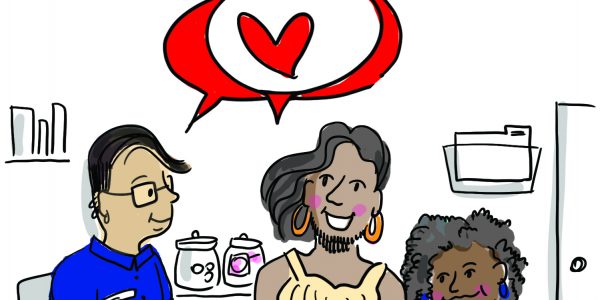Transgender Day of Visibility
Sunday, March 31 is International Transgender Day of Visibility. This year’s theme is “surviving, thriving” (#TransThriving on social media) to raise the profile and celebrate the accomplishments of transgender and gender non-conforming people, while also recognizing the work that still needs to be done.
What is transgender?
Transgender and trans are umbrella terms used to describe people whose gender identity differs from the sex they were assigned at birth or the societal and cultural expectations of that gender.
Trans people may have typical binary identities such as male or female or they may have non-binary identities that don’t fit within these categories. An estimated one per cent (1%) of the population identifies as transgender, which means there are approximately 46,300 transgender people living in British Columbia. To put this in perspective, this is similar to the same number of people in BC with natural red hair.
Trans Care BC
In 2015, BC became the first and only province in Canada to create a provincial system to support transgender health. Trans Care BC, a program of the Provincial Health Services Authority (PHSA), supports the delivery of equitable and accessible health care and peer and community support for transgender, gender-diverse and two-spirit people.
Since the program began in 2015, Trans Care BC has introduced a number of changes to improve the health care experiences of trans people across the province. Work continues to provide education to health care providers and reduce barriers to accessing services for trans communities.
What challenges do trans people face while accessing health care?
Trans people experience many barriers in areas that other people may not realize. These obstacles include accessing washrooms, filling out forms, and having health care professionals and colleagues acknowledge/affirm them their gender.
What health care workers can do to create a more inclusive space for trans people
Each of us can shape our workplaces to be more inclusive of trans people in health care settings, whether as a colleague or a patient/client.
Language
A trans person may want to change their birth name or the pronouns they use (he/she/they) to fit their gender identity. For many trans people, being associated with their birth name or the wrong pronouns is a source of frustration, so it’s important to respect the names and pronouns a person is currently using. You can make your language more inclusive of trans people by adopting the following:
- Use the name and pronouns that people identify themselves with.
- If you don’t know what pronouns to use, use gender neutral language, such as ‘they’ and ‘them’ during interviews, meetings, exams, et cetera or ask what pronouns a person uses.
- If it is relevant to know how someone identifies themselves (male/female/non-binary), ask respectfully in a confidential manner.
- If you make a mistake, apologize quickly and sincerely, use the correct term and move on.
Forms
Intake forms for work or medical appointments can be a source of angst for trans people. Often the forms ask for legal name and require you identify as either male or female and there is no space to enter name used or pronouns used. Where possible, consider the following to make your forms more trans friendly:
- In required forms, offer people a chance to self-identify.
- Name Used: ___________
- Gender: ____________
- Pronouns (She, He, They…): ___________
- Use gender-neutral terms to avoid assumptions.
- “During a cervical exam it is common that an individual may express that they are feeling some discomfort.”
- Update data management systems to offer the ability to self-identify gender and protect confidentiality.
Access to spaces
Some public spaces, such as washrooms or women’s only health services, are segregated by gender. This can be a source of worry for many trans people and gender diverse people as they often must choose a space based on other people’s perception of their gender, which can cause significant anxiety and in some cases results in violence and harassment towards them.
To make spaces more inclusive of trans people, think about the following:
- Consider gender neutral and/or trans inclusive washroom options whenever possible.
- Gender neutral washrooms also benefit people who may require assistance from someone of another gender, such as parents accompanying children.
- If only gender segregated options are available (women’s/men’s washroom):
- Allow people to choose the needed services based on how they identify.
- Mark trans inclusive facilities or services (on your website, brochures, washroom signage, et cetera)
- Address inappropriate behavior or remarks from any clients and staff.
Want to learn more?
Participate in a short (less than 30 minutes) Learning Hub course from Trans Care BC and Trans Rights BC on the difficulties faced by trans people in the workplace and how you can support them and foster an inclusive environment. The course is lighthearted but deals with real issues faced by trans people in the workplace.
For clinicians who would like more information about clinical care see this UBC CPD webinar by Trans Care Medical Director Dr. Marria Townsend.
For more information on Trans Care BC and its aims and accomplishments take a look at the Trans Care BC website and the Trans Health Information Page site.
Trans Care BC has also developed a toolkit to support primary care providers with gender-affirming care in a primary care setting.

